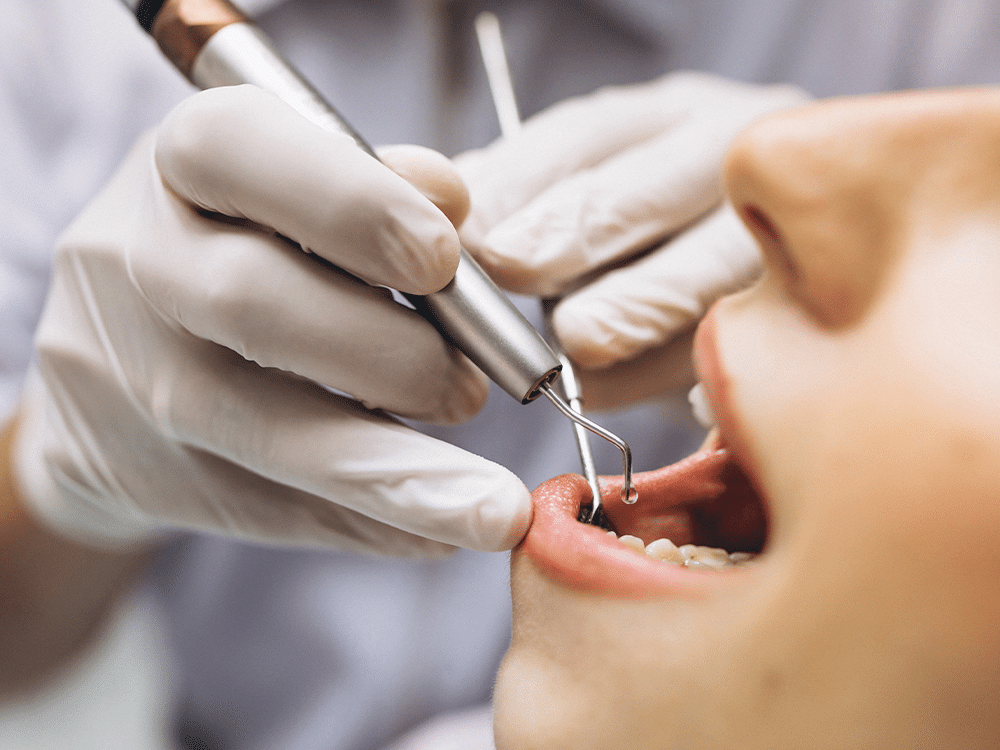Cosmetic Dentistry
Cosmetic dentistry is a branch of dentistry that beautifies not only the teeth but also the gums and the alignment of the teeth. The principal purpose of cosmetic dentistry procedures is to improve the patient's mouth shape and smile. These procedures encompass all aspects of strengthening and improving the function of the teeth.
Although a perfect smile is the main focus of cosmetic dentistry, it is equally important to restore the health and function of the teeth. When these two elements are blended, the result is a natural, beautiful, healthy, and long-lasting smile.
What Procedures Are Included in Cosmetic Dentistry?
Smile Design
Research shows that we focus on people's teeth while laughing and talking. Therefore, the ideal smile is more appreciated. Smile design includes planning the perfect smile for each individual and obtaining this smile with the necessary procedures.
Smile design usually involves two or more procedures. These procedures are other procedures used in cosmetic dentistry. Teeth whitening, calculus removal, zirconium crown, laminate veneer, and bonding procedures are among the most popular treatments in smile design.
Pink Aesthetics (Aesthetic Gum Treatment)
Aesthetically, the gums are just as important as the teeth. No matter how beautiful the teeth look, they lose their importance next to dark or overly prominent gums. Gingivitis, gingival bruising, and bleeding gums are the most common gum problems. The use of lasers has become widespread in the treatment of these problems. Laser therapy gives both fast and permanent results.
The excessive appearance of the gums during the smile, known as the "Gummy smile" can also be treated with laser. In this process, the smile line is determined, and the excess gums are removed with the laser. Thanks to the laser application, the treatment is done easily with almost no bleeding and pain. Also, the recovery time is very short.
Gum recession is another common health problem. The biggest visual problem here is the black spaces between the teeth. In such cases, these gaps can be closed by adding gums. It is also possible to turn darkened or bruised gums back to a healthy color in a single session with laser treatment.
Dental Bleaching
Dental bleaching, one of the most popular cosmetic dentistry procedures, is divided into two types, home type, and office type. Office type teeth whitening is applied by the dentist in the office setting. In this process, a whitening agent containing hydrogen peroxide is applied to the tooth surfaces, and this agent is activated together with light or laser. Personalized transparent plaques are created for home-type teeth whitening. The whitening gel is applied to these plaques and applied to the teeth. These plaques should be kept in the mouth for at least four hours. You should brush your teeth before and after the application and avoid colored beverages for a week. If you are a smoker, you should stop smoking for a while after bleaching.
In-office bleaching makes a visible difference in thirty minutes, while at-home bleaching that difference occurs within a week. In addition, in-office bleaching is more permanent and much more effective than at-home bleaching.
Aesthetic Fillings
The aesthetic filling procedure gives a natural and aesthetic result by using composite material and filling material with natural tooth color on the teeth. Aesthetic dental fillings are preferred by many patients since they have the form and color of natural teeth, and the filling boundaries are not clear. With the developing technology, aesthetic fillings are at least as long-lasting as metal fillings today.
Zirconium Crowns
Zirconium is a strong crown material and biologically compatible with the tissues around the teeth. Zirconium crowns, which have a light-transmitting structure, have a bright and transparent appearance like natural teeth. Zirconium crowns are used to treat dental caries, replace broken or damaged teeth for any reason, correct color and form disorders, and close the gaps between teeth.
Full-Ceramic (Empress) Crowns
Full ceramic crowns are translucent and transparent, just like zirconium crowns. They look very natural due to their high light transmittance. It is very difficult to distinguish from a real tooth. Empress crowns are mostly applied on anterior teeth and premolars that are not exposed to excessive chewing force.
Laminate Veneers
Laminate veneers are made of very thin porcelains used especially for anterior teeth. Laminate veneers, which can be placed with little abrasion of tooth tissue, are advantageous in this respect. In addition, they are very successful in terms of naturalness and aesthetic appearance. Porcelain laminates are produced with sensitive techniques due to their thin structure. Their compatibility with teeth and surrounding tissues is excellent.
Bonding
Bonding is an instrumental treatment for laminate veneers. Bonding is also known as resin veneers and is made of composite materials used in aesthetic fillings.


